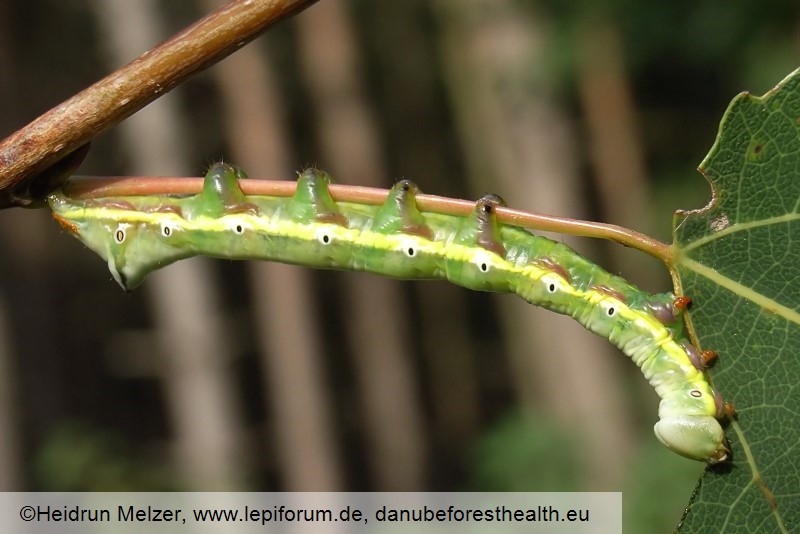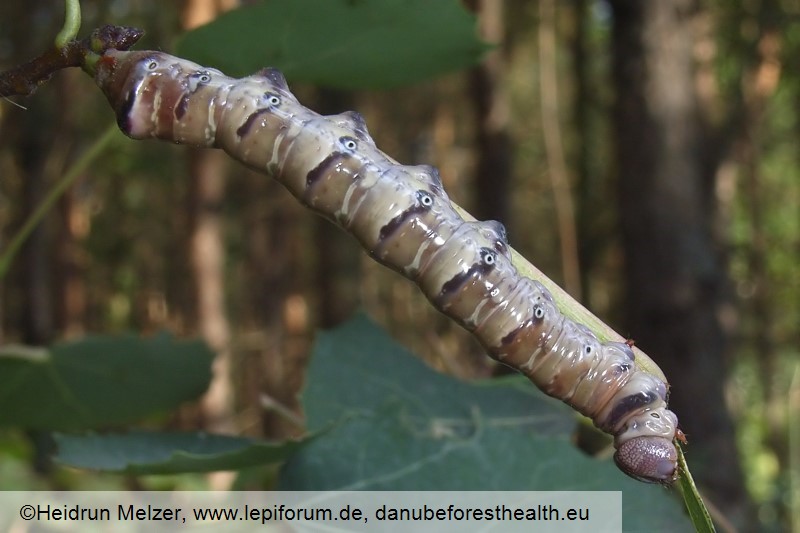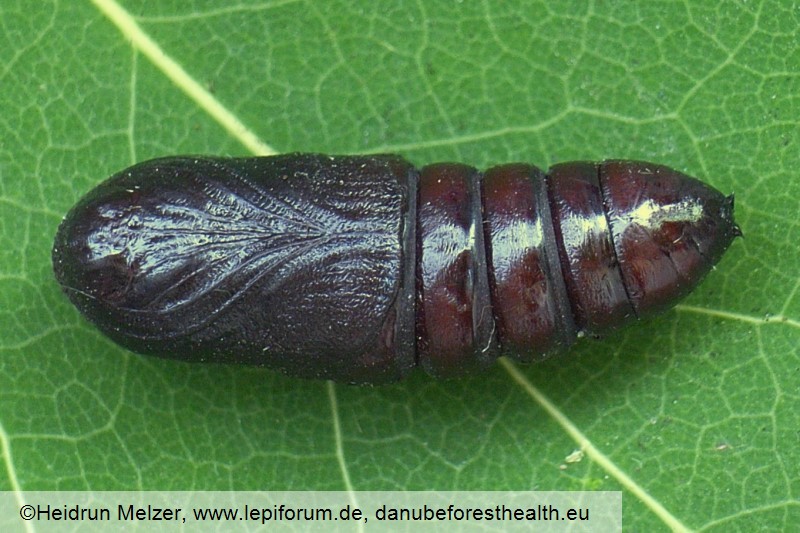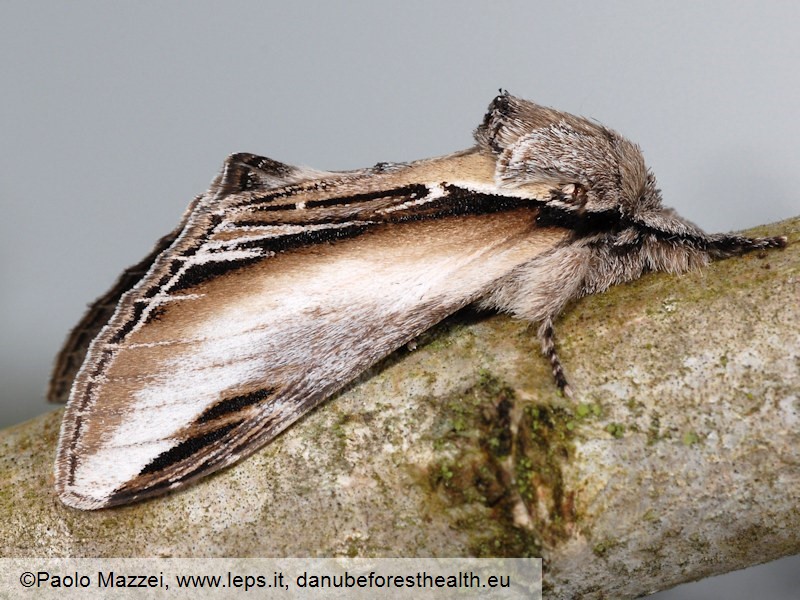Animalia
Swallow prominent
Pheosia tremula
Andreja Kavčič
|
|

Fig. 1. Defoliation on Populus sp. caused by the Pheosia tremula larvae

Fig. 2. A mature Pheosia tremula larva – the green form

Fig. 3. A mature Pheosia tremula larva – the brown form

Fig. 4. A Pheosia tremula pupa

Fig. 5. An adult Pheosia tremula
DETECTION PERIOD:
March to October, eggs can be seen on the bark from November to February.
DESCRIPTION:
Two generations of the swallow prominent develop in one year. Adults of the overwintered generation emerge in March and fly till June, adults of the first generation emerge in July and fly till September. Adults are 22–28 mm long moths with a wingspan of 50–60 mm. They have a brown body, densely covered in hair, and light brown wings. On the forewings, they have a dark brown subapical patch at the costa, a fine white line along the marginal edge, and a dark brown subdorsal streak from the basal area to the outer margin, interrupted by a distinct white mark. The hindwings are creamy white, without markings except for a dark brown patch at the anal apex. The female lays pearly white eggs on leaves or bark. Caterpillars come in a green and brown forms, with colour variations such as a bright green with a yellow longitudinal line on both sides of the body, and brown with dark transverse lines on the dorsal side of the body. Larvae can be seen feeding or resting on leaves from May to October. P. tremula pupates in a light cocoon in the ground in autumn. The dark brown pupa of the second generation overwinters.
HABITAT:
The swallow prominent can be found in various natural and manmade habitats, mainly on aspen (Populus tremula) and other poplars (Populus spp.), rarely on willows (Salix spp.), birches (Betula spp.), locusts (Robinia spp.) and other broadleaved trees and shrubs. It prefers damp grove-rich habitats, e.g. poplar and willow forests (riparian forests, swamp forests, forest edges, overgrowing forest clearings), river banks, plantations and urban areas, including larger cities (poplar avenues, parks).
STATUS:
The swallow prominent is native in the Palearctic region. It is widespread in Europe, including the ReFOCUS area, and the temperate Asia. It is common, but is becoming rarer due to the loss of suitable habitats.
IMPACT:
Damage is caused by larvae, which feed on leaves and cause defoliation. The swallow prominent can cause total defoliation.
SIMILAR SPECIES:
The swallow prominent is very similar to the lesser swallow prominent (P. gnoma). Moths can be distinguished by the distinct white mark, which interrupts the a dark brown subdorsal streak that runs from the basal area to the outer margin of each forewings. The mark is much wider and wedge like in the lesser swallow prominent.
|